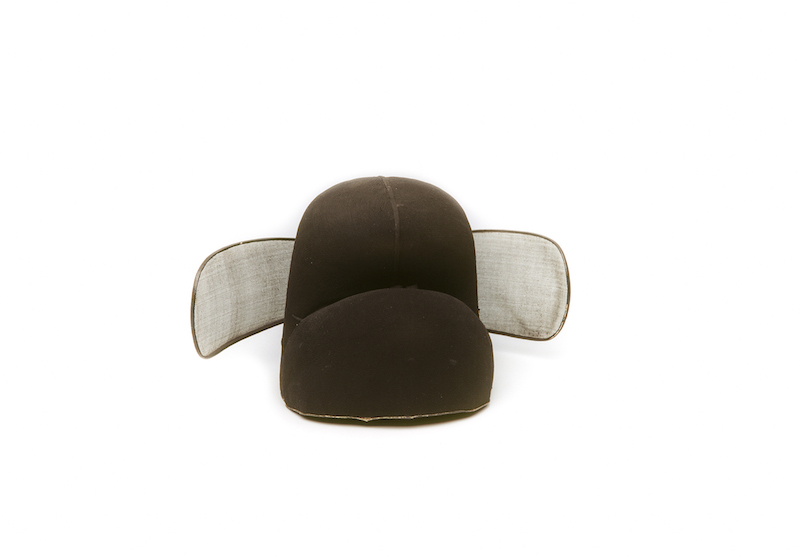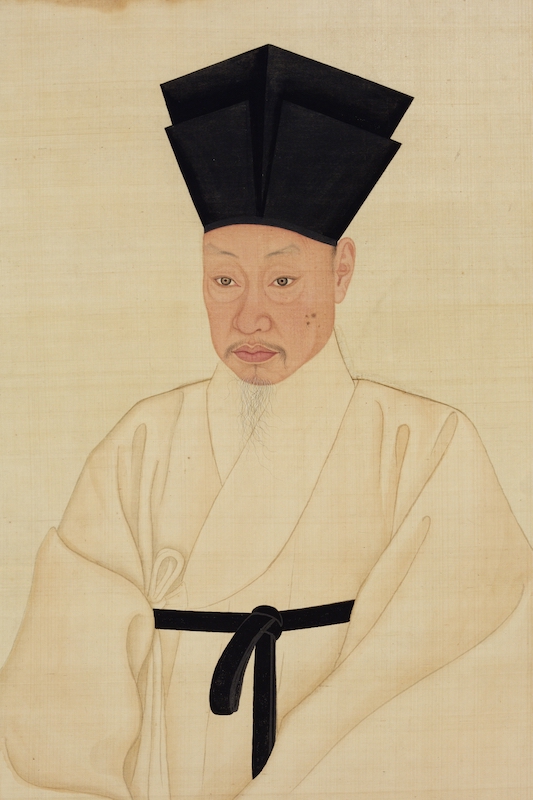
The State Museum of Oriental Art in Moscow
Jeongjagwan is traditional Korean indoor headwear. It was designed exclusively for high-class, neo-Confucian scholars—philosophers, politicians, and public officials of the Korean Joseon state, which existed from the 14th century up until 1897. This headwear style was also used during the short period of time before Korea lost its independence—until that point the country was known as Daehan Jeguk. Similar to other horsehair hats, jeongjagwan were manufactured using a special block to shape the woven structure which was then lacquered. Its specific shape, with eight or twelve peaks, led to the jeongjagwan’s common association with mountains. The headdress was most likely shaped this way intentionally: mountains were seen as symbols of honor and wisdom and the jeongjagwan was worn to emphasize the noble origins of its owner. Just as neo-Confucianism came to Korea from China and was further developed by local philosophers, the jeongjagwan was an upgraded version of a Chinese model.
This particular item dates back to the early 20th century, when the variety of everyday Korean headdresses reached its climax. Men and women wore different pieces depending on their marital and social status, as well as their circumstances: at home or at work, on weekdays, during festivities, or in periods of mourning. This differentiation was important because of the particular features of the neo-Confucian philosophy, the foundation of which lied in the preservation of a social order that assigned every member of society their own role.
Men's headwear yugeon. Korea, 19th century
The State Museum of Oriental Art in Moscow
Portrait of Gang Se-hwang. Unknown author of the Joseon Dynasty
Portrait of Seo Jik-su. Yi Myeong-gi and Kim Hong-do, 18th century
National Museum of Korea
In addition to the jeongjagwan, both Confucian noble scholars and especially students at Confucian academies also wore yugeon—tall headgear with two triangular peaks on the upper edge. They were made out of hemp, cotton, or ramie (China grass). Both the jeongjagwan and the yugeon were worn over a tanggeon headdress, which was usually put on a top knot—thus, their “graded” shape. Middle and high-class citizens usually wore tanggeon at home and put something over it when going outside. Another piece of headwear—a black samo with the same tanggeon-like “grade” and two round-shaped “wings” on the sides—was supposed to be worn by public officials on duty. The rest of the citizens were allowed to wear samo during weddings. A white samo was worn during the time of mourning.
The State Museum of Oriental Art in MoscowPortrait of U Dang. Unknown artist of the Joseon Dynasty
National Museum of Korea
One of the Five Portraits of Yun Jeung. Yi Myeong-gi, 1788
Cultural Heritage Administration
A Korean traditional garment called the hanbok underwent massive changes at the late 19th—early 20th century. During the same period, important neighbouring countries began interfering with the internal affairs of the Korean state, which was weakened by a national crisis. The country began to rapidly lose its internal independence while other countries were virtually deciding who should rule over the country. In 1910, the country was annexed by Japan. Up until the end of the 19th century, Korea stayed a closed, almost unexplored and barely accessible territory, in particular to Western cultures. Although Russian diplomats, who played an important role in the Far East policy, started to make their way to the land during this period, in Russia very little was known about Korean culture up until the middle of the 20th century. Indeed, objects from Korea submitted to the Ars Asiatica museum (now called the State Museum of Oriental Art) which opened in 1918, were often attributed to the Chinese and were only assigned into a separate Korean collection decades later.
According to Irina Eliseeva, custodian of the Korean collection at the Museum, the question of determining whether or not objects belong to the Korean or Japanese or Chinese traditions still remains one of the most popular topics of discussion. The austere Joseon porcelain and incrustated celadon ceramic ware of Goryeo era (X—XIV centuries) have unique artistic features—this incrustation technique was invented by Korean ceramists and distinguishes their work from the Chinese celadon pieces. Another specific feature of the Korean style is the flamboyant color combinations in traditional garments, the use of which was, however, was subject to strict regulations—as was the use of headwear.
Translated from Russian by Liya Ebralidze














